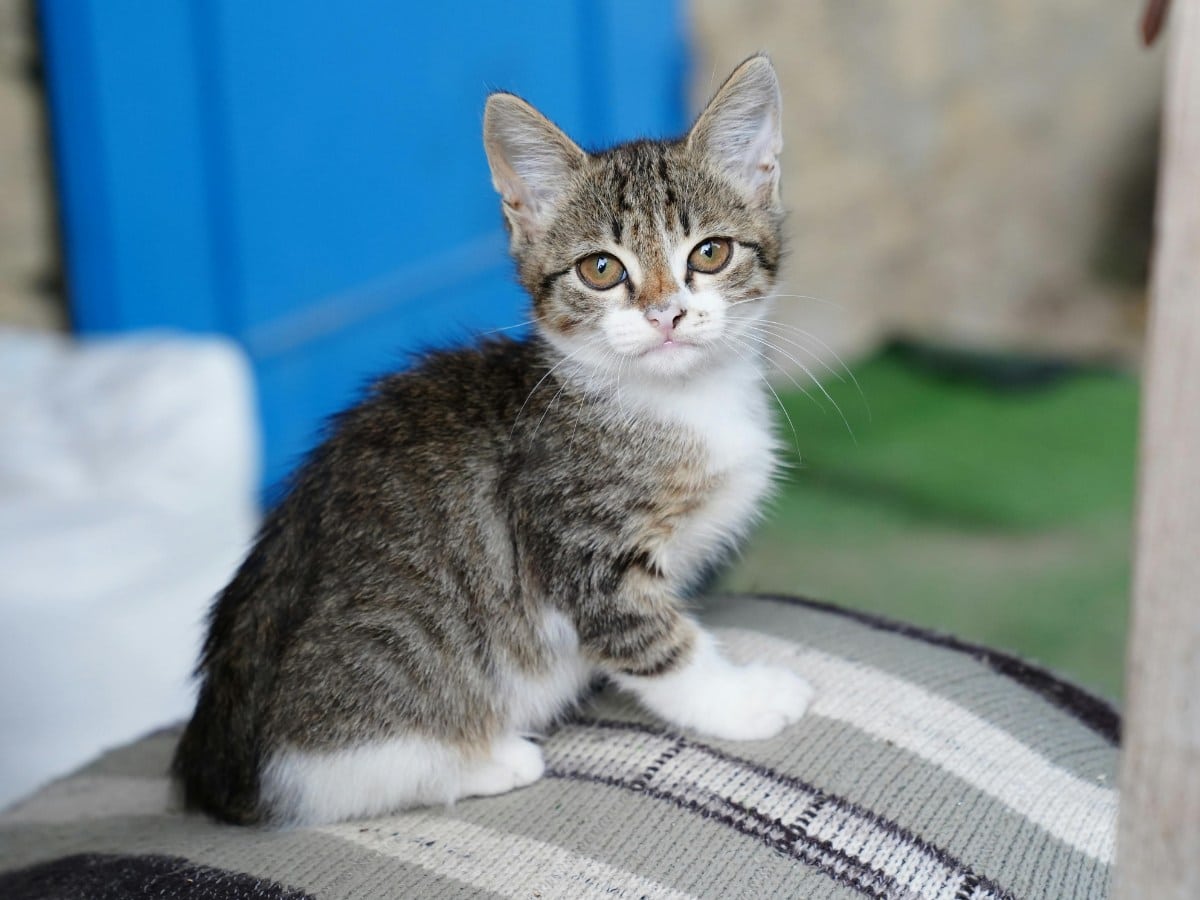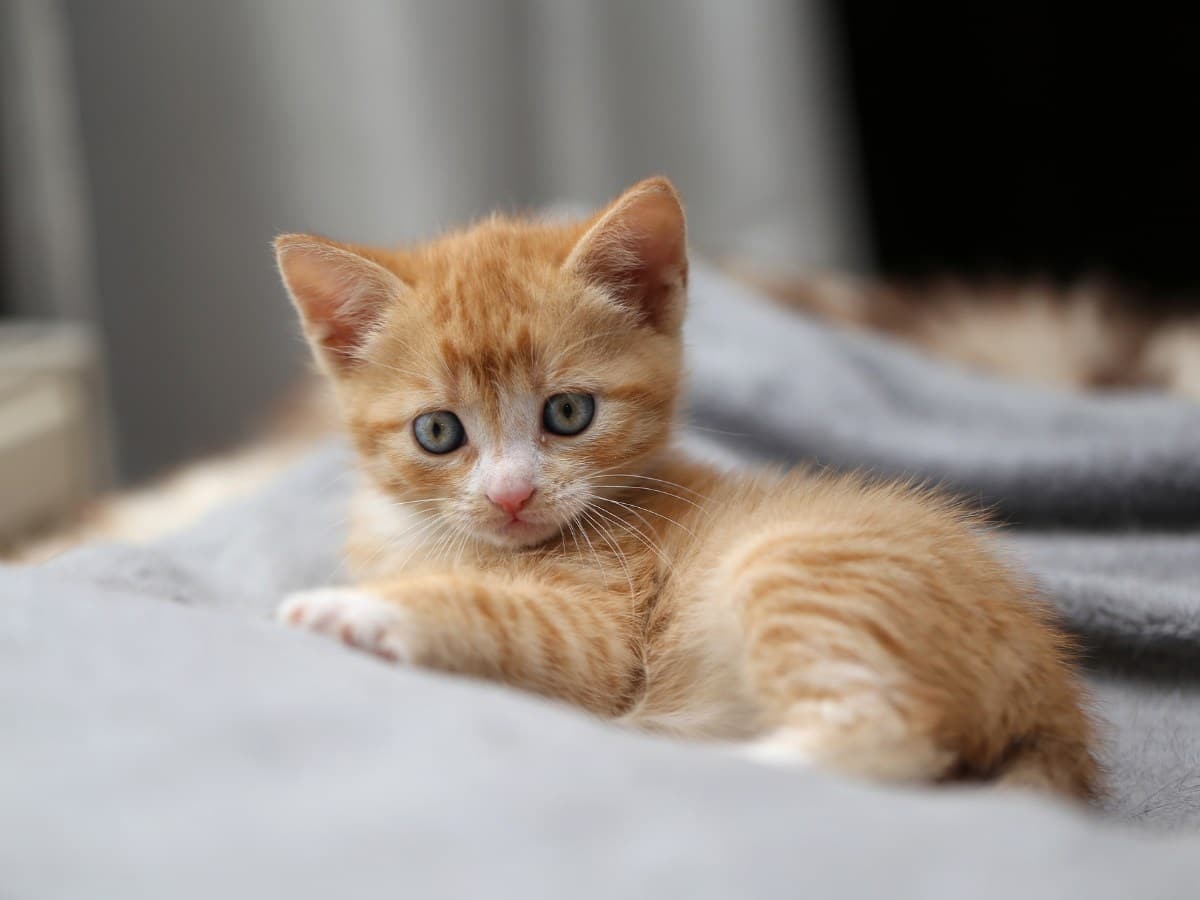
Getting a Good Start with Your Kitten
Kittens – Getting Off To A Good Start
How best should I introduce my new kitten to my home?
Your interaction with your new kitten begins on the ride home. Cats should always be transported in some kind of carrier in the car. By teaching your kitten to ride in a confined location you are providing safety as well as starting a routine that you can maintain for future car rides. Upon arriving at home, place the kitten in a small, quiet area with food and a litter box. If the kitten is very tiny, a small litter box with low sides may be necessary at first. If possible, duplicate the type of litter material used in the previous home (See our handout on ‘House- training – using the litter box’).

Kittens are natural explorers and will use their claws to climb up onto anything possible. In the first few weeks, slow access to the home will allow exploration as well as the ability to monitor the kitten’s behavior.
What should I do if I have other pets?
Although some kittens may show fear and defensive postures toward other pets in the home, most young kittens are playful and inquisitive around other animals. Therefore, it is often the existing pets that can pose more of a problem. If you know or suspect that your adult dog or cat might be aggressive toward the kitten, then you should seek professional behavior advice before introducing the pets to each other.
The kitten should be given a safe and secure area that provides for all of its needs (as above) and introductions with the existing family pets should be carefully supervised. At the first introduction there may be no immediate problems, and reinforcement of desirable responses may be all that is required.

How can I prevent problems from developing?
The key to preventing behavior problems is to identify and provide appropriate outlets for all of the needs of the kitten. This is especially important for the indoor cat since all of its play, predation, exploration, scratching, elimination and social needs will need to be channeled into acceptable indoor options. Sexual motivation can be reduced by neutering. Most of the physical activity of an outdoor cat would be focused on the hunt or on predatory and social play. Interactive play should therefore be designed as substitutes. To provide multiple predatory play sessions, use wands and movable toys or small light toys of plastic, fabric, feathers or fleece, that can be batted, chased and retrieved. Feeding can be broken up and made more interactive by feeding multiple small meals, some of which can be given in foraging toys, stuffed into feeding toys, or hidden inside bags and boxes.

Can I prevent my cat from becoming overly fearful?
Most kittens are highly social, but sociability and social play might begin to wane after two months of age. Therefore as soon as the kitten is obtained you should make every attempt to introduce the kitten to a wide variety of people (various ages, races, and infirmities) a wide variety of environments, other pets, and as many new stimuli (e.g. noises, car rides, elevators) as possible. One way to help insurea positive relationship with each new person, pet, place and event is to give the kitten one of its favored treats or toys with each new meeting and greeting (See our handout on kitten socialization and fear prevention).
How can I teach my cat to enjoy handling?
Depending on the personality and early experiences as a kitten, your cat may enjoy, accept, or dislike certain types of handling, from petting to bathing. In order for the cat to learn to accept and enjoy a variety of types of physical contact from humans, it is critical that the human hand only be associated with positive experiences and that all physical punishment is avoided. Begin with those types of handling that the cat enjoys or is willing to accept, and provide small treats at each of the first few sessions. Once the cat learns to associate food with these sessions, slightly longer or more intense sessions can be practiced. This type of handling can be used to help the cat become accustomed to, and perhaps enjoy, patting, grooming, teeth brushing, nail trimming, and even bathing. Over time you can introduce a brush or comb so that you can help keep your cat’s coat clean and free of mats. Regular grooming will also help decrease hairball formation. Never force this type of handling upon your cat, as any negative experience will only make the problem worse and the cat more resistant to further handling. It is important to remember that physical discipline is inappropriate. It can scare your cat and make him or her afraid of being picked up or held. To help with problems you might encounter, please see our handout on controlling undesirable behavior in cats.
Are there other things I should train my cat to do?
It can be very useful and enjoyable to train your cat to a few simple commands such as to “come” when he is called. This can be accomplished by starting early. Take either a food treat or the cat bowl and show it to your kitten while slowly moving away from the kitten and at the same time saying his name and the word “come”. As the kitten follows and comes to you, give him the treat or food. With each repetition start a bit further away. Always reward the kitten when he gets to you with praise and a food treat. Remember not to proceed too quickly and make sure the kitten is successful each time. As the kitten learns the task, gradually phase out food rewards to a more variable schedule but always use praise and petting. Over time, your kitten should eagerly come when called. Similarly the pet can be encouraged to sit or give a paw. Use food lures to encourage the behavior and, when the pet responds consistently, add an appropriate word just before the cat displays the behavior.
Training your cat to accept the carrier without distress and fear will also come in handy over its lifetime. Using food rewards, delectable food, and play toys, you can entice the kitten to enter and explore the carrier. When the cat has voluntarily entered the carrier, the door can be briefly closed and then re-opened. Each time, try to leave the kitten in a bit longer before allowing him to exit. Be sure to never allow the kitten out when it cries or scratches at the crate or he will associate those behaviors with escape. Instead wait until the kitten is calm and quiet, praise him and allow him to exit. Do not keep him in longer than he can be good during the initial training; gradually increase the time inside. If car travel will be frequent, short trips can be taken for practice to get the kitten used to traveling in the car. In some cases a very large cat crate can be used as a safe haven for your kitten and can also accommodate litter box, food and water. Feliway™ might help some cats to more quickly adapt to their carrier.
In summary, a cat can become very demanding of attention, play and affection. Begin early to teach your kitten how to ask nicely for interaction. Obnoxious behavior such as swatting, excessive vocalization, biting and pouncing should not be tolerated. If your kitten begins to exhibit these behaviors, quickly and quietly leave the area and cease all interactions. Once the kitten is calm and qulet, call him over and’resume interactions. The goal is for the kitten to learn that calm, quiet responses get your attention, not wild or aggressive ones. For this to be effective you must be certain that you make time each day for appropriate interactions with your cat that include play, petting, grooming and naturally meeting his needs for food, water and a clean litter box.
